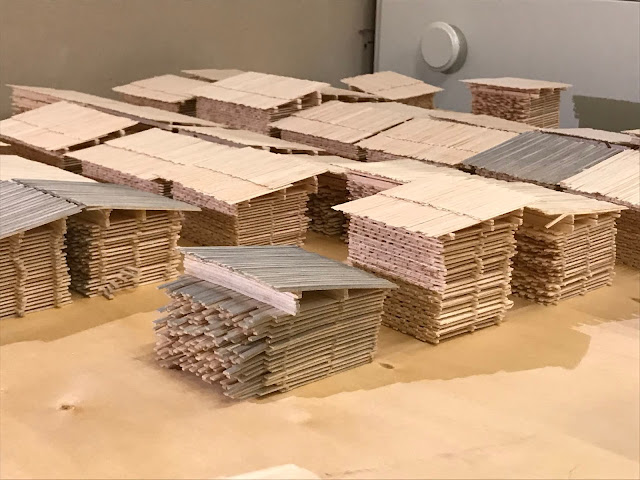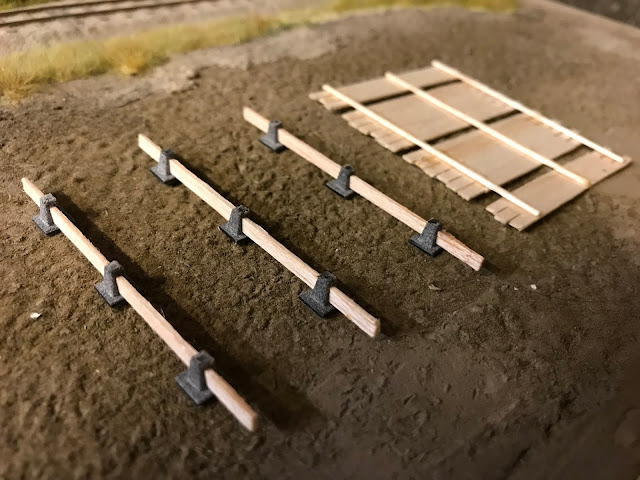While most people migled at the nearby beach in the varm sunny summerdays in mid july, I took the opportunity to assemble all the sections of Finstadbru H0e outdoor on the terrasse. For three days and two nights. I was a bit worried of rail buckling in the strong sun, but only a small part by the watertower was affected. probably a week spot anyway, so good to find to be fixed. Rails are code 40 soldered to PCb sleepers. 1 PCB and 3 balsa sleepers gives PCB sleepers ca 3.5cm apart. Works fine. Lenght of rail max 50cm.
I have now finetuned all joints between the sections. I use interscrew nuts and bolts M6. I am now ready to proceed with laying track to the sidings connecting kassefabrikken and later the sawmill to the railway. While having all outdoor in the fine weather, i took the oportunity to take some photos:
Here is a "dronefoto" from the balcony of the entire model incorporating the four old sections
Row 1 from left to right:
Freelance transition section/module to connect to Fremo standard
Row 2 from left to right:
Start of sidings and connection to kassefabrikken
Row 3 from left to right:
Sidings to sawmill - kassefabrikken
Row 4 from left to right:
Field and small creek - sawmill and plankstables - siding and main track + plank stables
Row 5 from left to right:
Pile of sawdust and creek - planing shed - Station building and crocery store
Row 6 from left to right:
Road,field and creek - track, watertower, smal bridge, shed, field with haystacs
Flyfoto of Finstadbru early1950s , look here:
Closeup of row 1,2 and 3
Picture of the "kassefabrikk" with passing train...
....and one more.
Include a couple fotos of the watertower with "Hesjer" for drying of hay.
More to come...
































